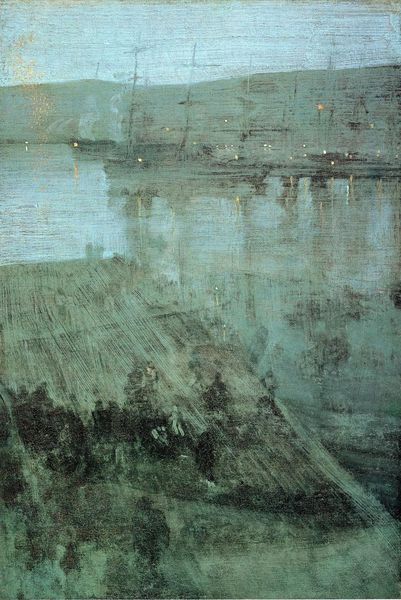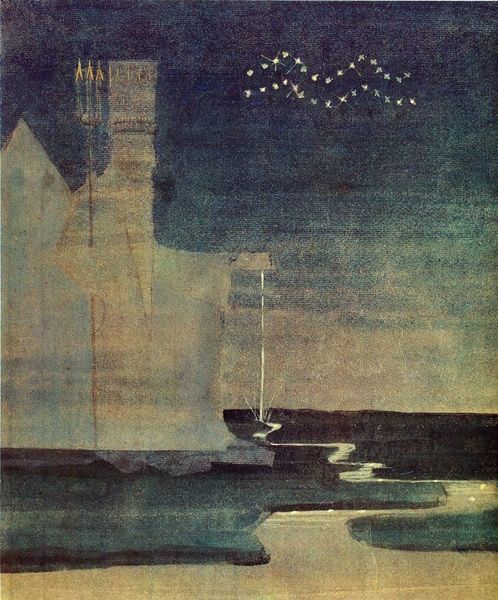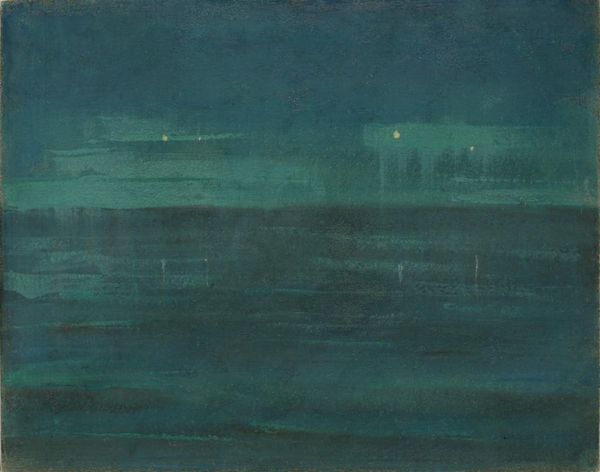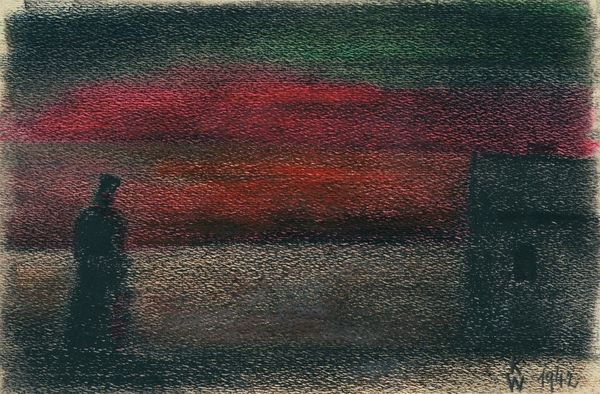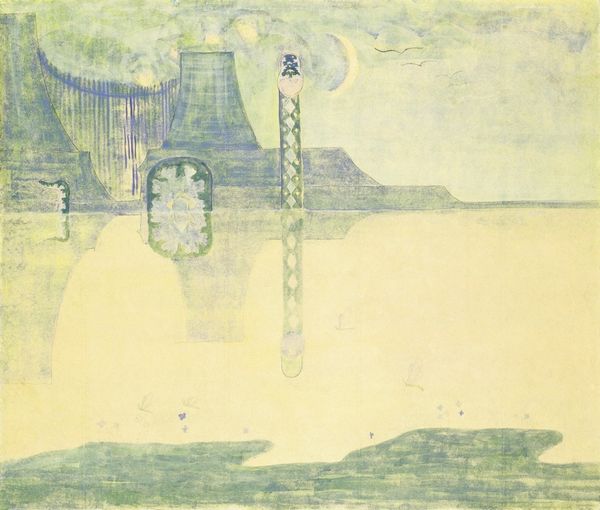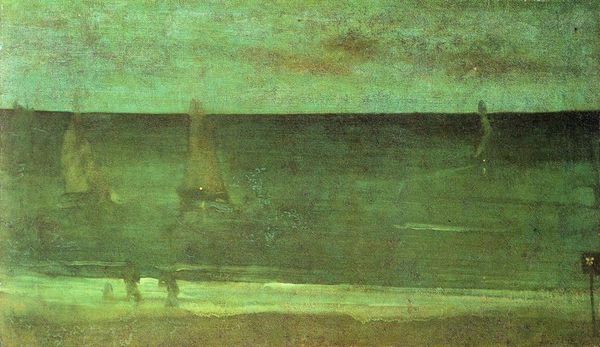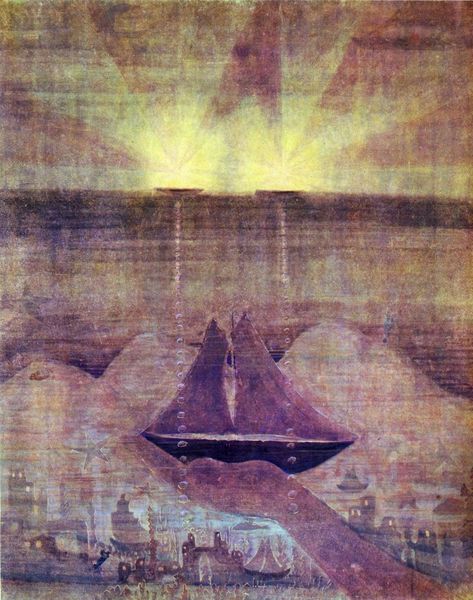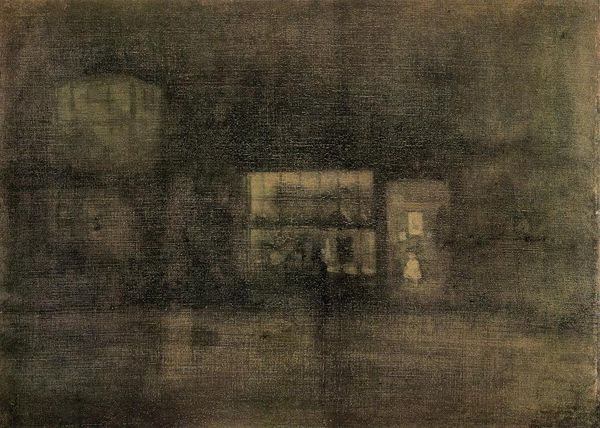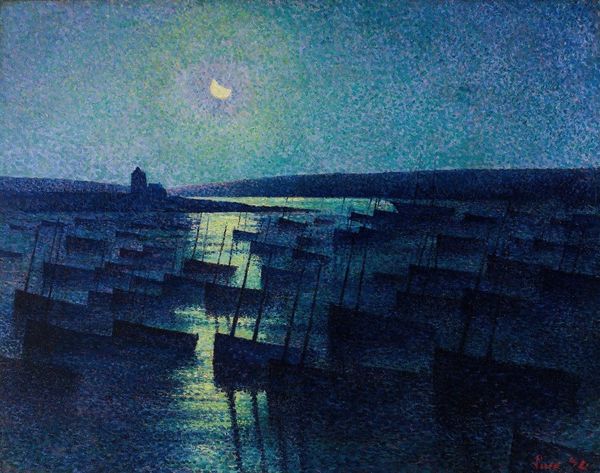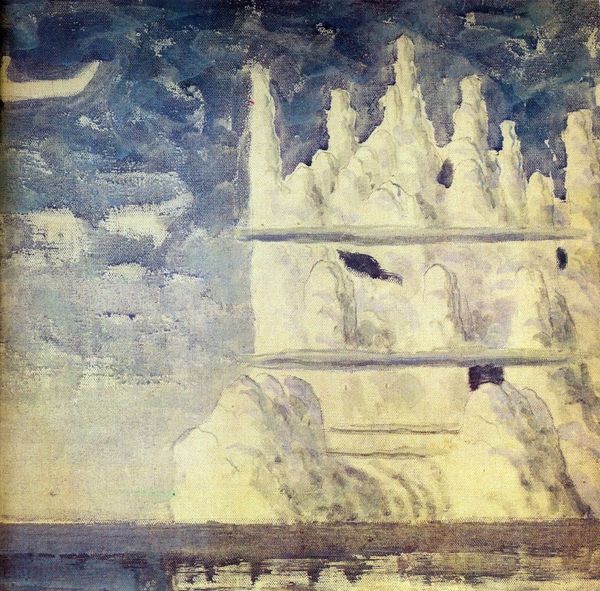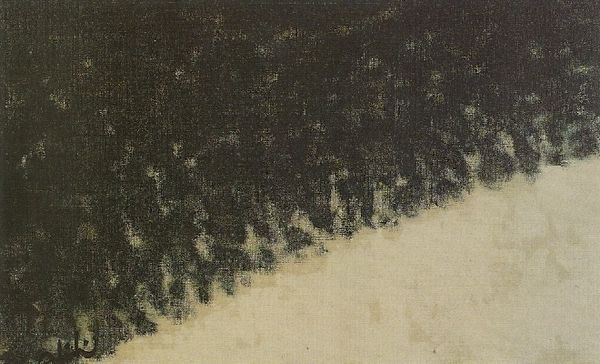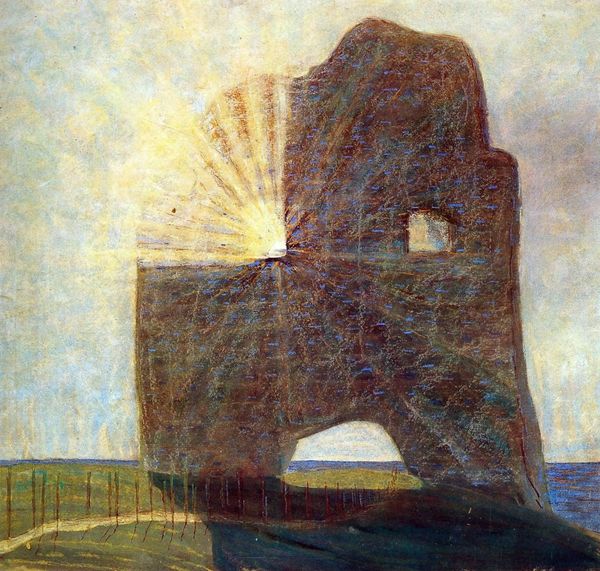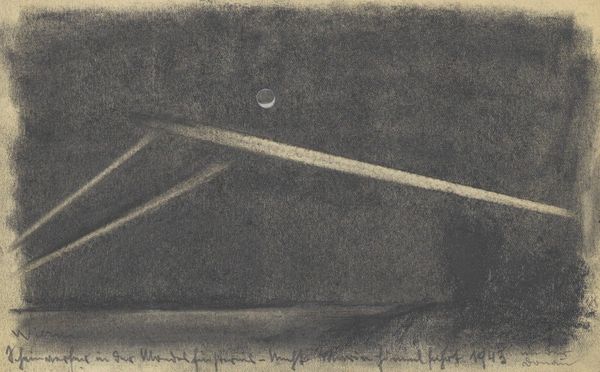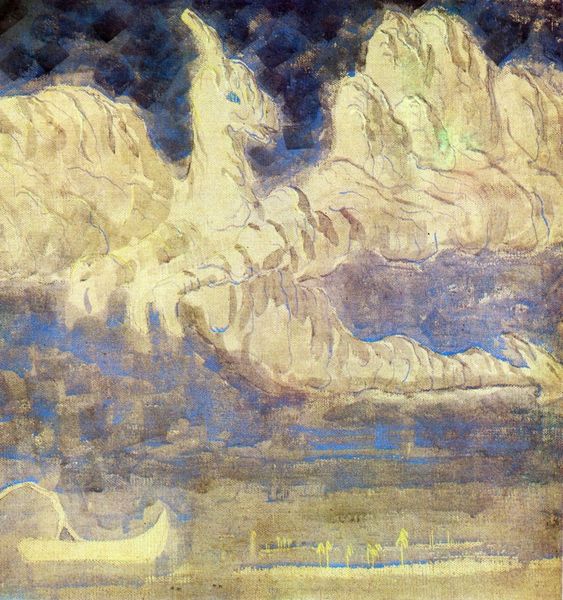
tempera, painting
#
night
#
sky
#
abstract painting
#
tempera
#
painting
#
landscape
#
form
#
geometric
#
abstraction
#
line
#
symbolism
Dimensions: 31.5 x 36.4 cm
Copyright: Public domain
Editor: This is "Sparks (II)," a tempera on paper piece from 1906 by Mikalojus Konstantinas Ciurlionis. It reminds me of a nighttime cityscape, but it’s all so soft and blurred, almost dreamlike. What's your interpretation of it? Curator: Considering its historical context, Ciurlionis painted this during a time of immense social and political upheaval in Lithuania and wider Europe. It reflects a turn-of-the-century fin-de-siècle anxiety, yes, but also a burgeoning interest in the spiritual and the abstract. Do you notice how the “sparks,” or rather these illuminated dots, seem to hover and float independently of any grounded structure? Editor: I do! It’s like the city is dissolving into pure light. Curator: Precisely. This detachment, this near-dissolution of concrete forms, mirrored the changing societal structures. Artists began questioning established norms, reflecting this uncertainty and a search for deeper meaning through symbolism. The work moves toward a form of musical abstraction too. This series on “sparks” or “fireworks” uses line and color to parallel musical composition in interesting ways. The sparks as “notes,” perhaps. Where do you see that reflected, specifically, in the visual structure of the painting? Editor: The lines radiating from each light maybe? They sort of build in intensity, like a crescendo. Curator: Exactly! And this elevates Ciurlionis beyond a mere landscape painter, situating him as a visionary responding to and shaping the cultural understanding of his time. He isn’t painting *just* what he sees, but how socio-political circumstances *feel*. Editor: Wow, I never considered how political anxiety could be expressed so abstractly. Curator: That's often the power of art – reflecting the anxieties and hopes of an era through form and symbol. The museum, then, isn’t simply about displaying “beautiful” art. Rather, it offers us an opportunity to confront a specific time in history and see our humanity echoed in its art. Editor: This gives me a lot to think about and another reason to dive deeper into historical and political influences and connections. Thanks!
Comments
No comments
Be the first to comment and join the conversation on the ultimate creative platform.
